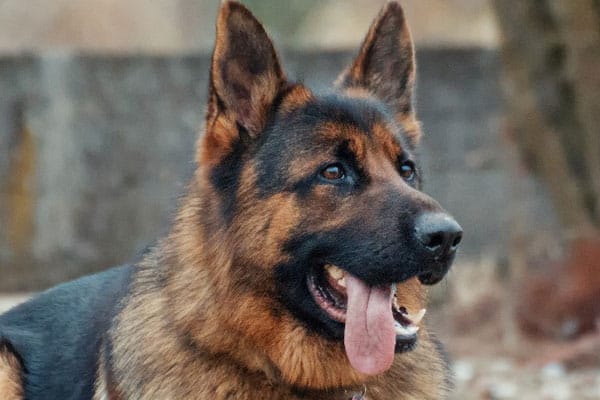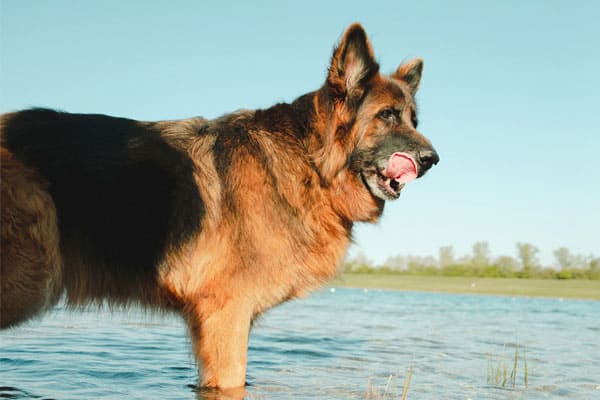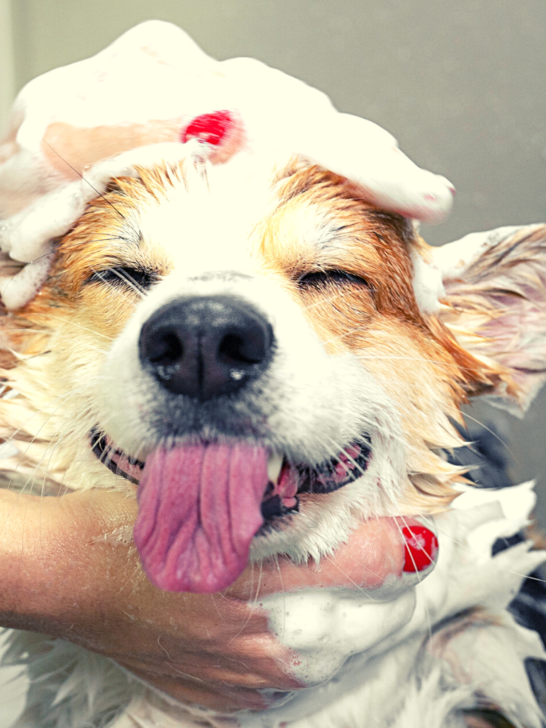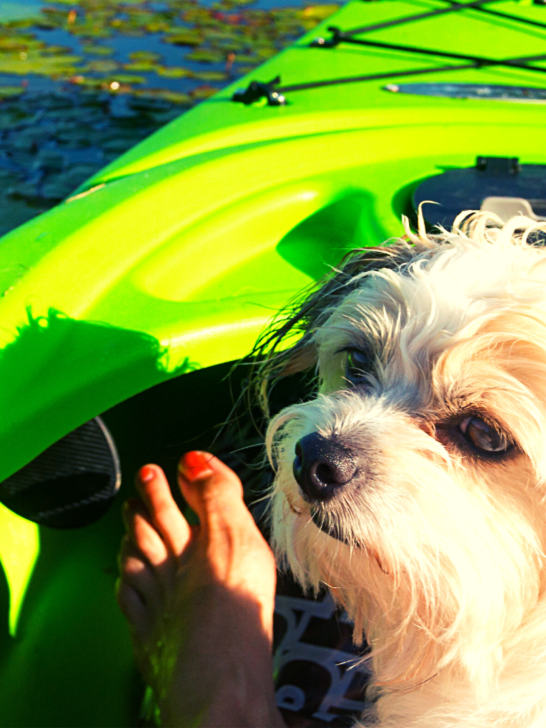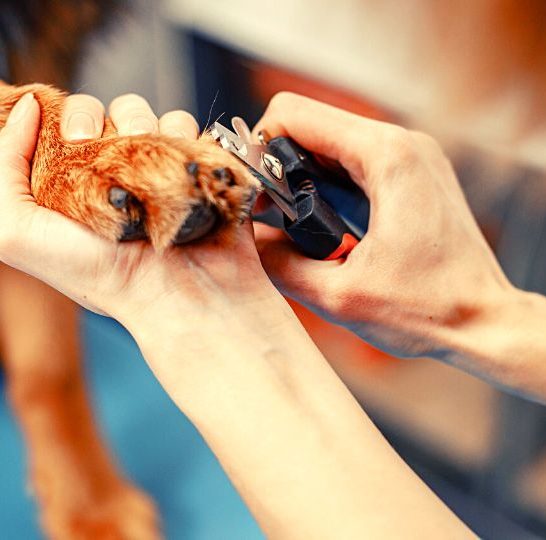7 Best Collars For German Shepherds – Reviews
A great collar is one of the most important gifts you can give your German Shepherd.
Not only is it an accessory and a tool that they’ll be using for years to come, but it’s also a critical part of your fun romps together—and your way to secure them as needed.
As a larger breed, it’s critical that you have the right collar and leash combo for your German Shepherd, so both of you are kept safe, happy, and enjoying your walks.
With such a wide range to pick from, choosing a collar can be incredibly intimidating—but we’ve assembled this fantastic guide to help you.
IN A HURRY? HERE ARE OUR TOP PICKS…
 ADITYNA Premium Dog CollarBest Overall Product |  Best Budget Product DAGANXI Tactical Dog Collar |  Runners-Up DEZIZEUSK9 Dog Collar | |
Summary | If you’re looking for an incredibly strong tactical dog collar that makes your dog feel comfortable while wearing it, this K9 collar is the best choice. | This collar has some very interesting design features for younger dogs or dogs in training, with a training collar integrated into the overall design. | Available in 2 large-breed sizes, 16” and 25”, this is a thick and tough collar that was modeled on police and military working dogs’ gear. |
Pros | Anti-chafe design | Quick-release safety buckle | 8 colors in a nice range |
Cons | Only available in one color | May hold odor fairly stubbornly | Too stiff for dogs with sensitive skin |
1. Best Overall: ADITYNA Premium Dog Collar
Pros
- Anti-chafe design
- Control handle
- Strong steel accessories and buckle
- Created for larger dogs
- Adjustable collar
- Great for dogs in training
Cons
- Collar adjustment is a little non-instinctive, but videos are provided
- The material might not be suited for dogs with sensitive skin
- The D-ring, whilst strong, is the common failure point on dogs that pull
- Only available in one color
Styled in the ever-popular tactical look, this is a tough collar that’s still comfortable for your dog.
It has an anti-chafe design that will reduce damage to the coat around the neck—useful for dogs that wear a collar all day.
What’s particularly noticeable about this collar is that you can still control your dog, even without a leash.
A special ‘handle’ design is built into the collar, allowing you to cross the street safely, and control your dog if there’s a visitor at the door, at the vet, or anywhere you need a little extra control.
This is a ‘military grade’ nylon collar, so it’s extra-robust. It latches with a steel D-ring for the leash and a robust buckle. It ships with two military-style ID tags, or you can add your own. It’s also fully adjustable.
2. Runner-Up: DEZIZEUSK9 Dog Collar
Pros
- ‘Working’ look is great if you’re training or you are buying for a service dog
- A nice color range (it’s offered in eight different colors)
- Can be personalized
- The buckle is backed with nylon to avoid coat pulling
Cons
- It can slip a little once sized, so check regularly that the collar is still the correct size
- It may be too stiff for dogs with sensitive skin—some coat wear is likely
- It’s a thick design, which may be a con for smaller GSDs.
Available in 2 large-breed sizes, 16” and 25”, this is a thick and tough collar that was modeled on police and military working dogs’ gear.
With a robust steel D-ring and quick-release buckle, it also uses reflective thread to add a little extra safety.
There’s a removable ‘patch’ that you can keep for some style, and with the hook-and-loop strap design, you can add other patches or devices (like night walking lights) with the same fittings.
It’s made with a very heavy-duty nylon webbing, and we particularly like the way the buckle is backed to avoid catching the skin or coat and provide a more consistent and comfortable feel for the dog.
3. Best Value for Money: DAGANXI Tactical Dog Collar
Pros
- Soft material, ideal for young or sensitive skin
- Airtag compliant for tracking
- Quick-release safety buckle
- Unique design
Cons
- While the velcro allows for customization, there is a lot of it
- Quick-release buckles are helpful, but if you add a lot of tags they can unexpectedly release
- May hold odor fairly stubbornly
This collar has some very interesting design features for younger dogs or dogs in training, with a training collar integrated into the overall design. It has a quick-release clasp for emergencies.
It’s also fitted with a control handle for those moments when you need to grab the dog closer, or if they’re off-leash and you need immediate control.
While the body of the collar is nylon, it’s padded with a soft layer at the back, so it’s a great choice for young dogs or dogs with sensitive skin.
It ships with a protective Airtag case for your dog’s tags, so the dog can be tracked by Airtag if needed.
There are also two patches, and you can customize your own too.
4. Alternative: Amai keto Tactical Dog Collar
Pros
- Well-padded for sensitive skin
- Double buckle—velcro and steel
- Notable customer service
- Easy to clean
- Range of patterns and colors
Cons
- The tag area can get thick, depending on the tag
- As with all quick-release options, it can wear with time
- Some quality control issues have been noted
- MATERIAL: Nylon
- COLOR: Ranger Green
- SIZE: variety of sizes
Made from a robust 1000D nylon, but softly padded, this is another collar that will suit more sensitive skin. It also has a double closure system, with both velcro and a heavy-duty metal buckle option.
While the control handle isn’t as unique as some on this list, it does have a D-ring handle that doubles as the leash connection. It’s still useful for situations where you want to take extra charge.
It is customizable at the back, carrying name tags, ID badges, and anything else you can attach via velcro.
5. Alternative: Xqpetlihai Tactical Dog Collar
Pros
- Padding and breathable lining are gentle on the coat
- Quick-release buckle
- Control handle
Cons
- Language barriers can make customer service difficult
- Not the strongest collar on our list
- Retains hair
We particularly like the breathable lining and tough nylon shell on this collar. It is fully adjustable, with a quick-release buckle.
It has a velcro button closure as well as a standard buckle. There are three size options to choose from. It has a soft, but functional, control handle that can tuck down when not needed.
6. Alternative: OEBEESA Tactical Dog Collar
Pros
- Soft control handle
- Cushioned for a more comfortable fit
- Airtag protective case included
- Rust-proof metal makes it good for wet activities
- Quick-release buckle
Cons
- A little too much velcro on the collar—may make contact with skin
- Can retain odor if not allowed to dry between wet activities
- The line runs small—buy by physical measurements not sizes
The double D-ring setup on this collar allows you to distribute the weight of your dog’s tags along the leash attachment more easily, or even use a separate belt attachment for training.
It has a soft and comfortable control handle to help you. With a tough 1000D nylon shell, it’s cushioned for extra comfort.
The collar can be fully customized with velcro-attached patches. It ships with a protective case for Airtags.
7. Alternative: WHIPPY Wide Military Dog Collar
Pros
- Solid customer service with a promised 24-hour turnaround on inquiries
- Full reflective stitching for extra visibility
- Quick-release buckle
Cons
- It could be too wide for young or smaller dogs
- The control handle is a little weak
- The line runs a little big and roomy, which could be a con or pro
- MATERIAL: Nylon
- COLOR: C-red
- SIZE: 26.77 x 1.5 x 0.11 inches
Despite the solid 1000D nylon, this is a soft and easily adjustable collar for German Shepherds. This is an easily washable color and retains its color and softness without warping. It has a D-ring control handle.
We particularly like the fully integrated reflective threads in this collar, helping to keep your dog more visible at night and to traffic. If you often walk at night, or you have a dog prone to breaking out, this is a great choice.
This collar has a velcro US flag patch that you can swap out for a custom one if you prefer. A solid quick-release buckle finishes a solid package in a range of colors.
Key Characteristics of a Great German Shepherd Collar
Most daily collars should be flat and designed to be comfortable to wear in the long run.
You can use ‘breakaway’ collars on younger puppies for added safety, but these are not usually necessary on older dogs.
It’s a good idea to keep a daily collar on your dog, even if you change it for other activities. No matter how conscientious you are, accidents can happen.
With a collar, you can add your name to its tags or the collar itself, and even use a pet tracker to help with any necessary recovery.
Some states also require your dog to have a collar with tags, or you will face a fine if they get out — and these can be steep! If you wish, and your dog sleeps in the house, you can take the collar off at night.
Don’t feel that you need to buy one collar to suit all purposes. Sometimes, variety is the best idea. Typically, your dog will have a collar they wear daily, with their ID tags.
However, you may want to opt for a separate collar for walk time, especially if you are battling with leash discipline.
Martingale collars can be a great walk-time companion for dogs who are still learning not to pull on the leash.
If you hike, swim, or do other activities with your dog, you might want a specific collar that is better suited to the activity and any safety gear you are using.
German Shepherds can even use a carrying ‘backpack’ when you hike and take all their gear along with them!
So, don’t feel tied to finding one perfect collar. Instead, think about what you and your dog do together, and what will suit them best for different activities.
You may even want to swap their daily collar occasionally, either to clean it or simply for some added style and fun.
What Materials Work Best for a German Shepherd Collar?
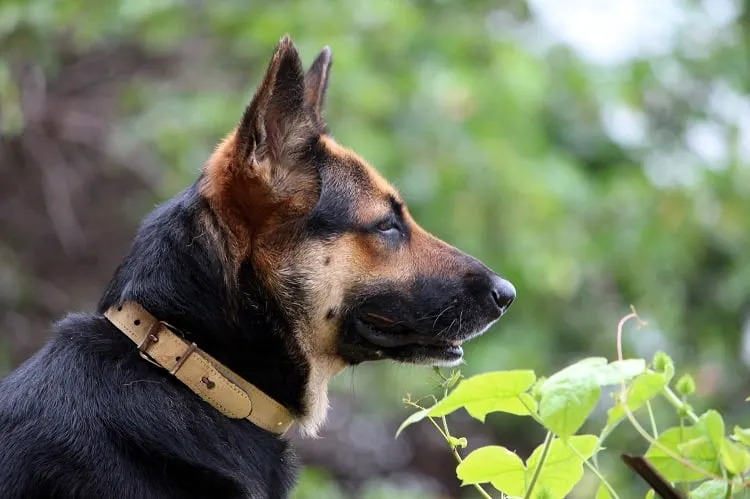
The material that you choose for your collar depends on your budget, as well as the intended activity. All of these choices have their own pros and cons. Let’s take a look.
Nylon
Nylon is one of the most popular collar choices; it’s durable, tough, and affordable. As a synthetic material, it wears well and dries quickly if wet.
You’ll find it in a ton of colors and patterns, so it’s also easy to find an aesthetic you like.
However, it will get dirty more easily than some of the other choices, and will likely need to be replaced more frequently than some other material types.
You may need a padded version for dogs that struggle with sensitive skin.
Neoprene
Neoprene is a great choice for doggies who like water. It’s actually what scuba suits are made from!
Quick drying and robust when wet, it’s likely to be a more comfortable (and less smelly) choice for water activities.
Most of the neoprene dog collars on the market are reinforced with nylon for extra strength, as it’s quite soft by itself.
This makes them thicker (and a little pricier) than the nylon options, but they’re the no. 1 fabric choice for water activities and dogs that you can’t keep out of water.
Leather
The classic choice for dog collars, leather is high-quality and durable. It’s more breathable than nylon, so dogs with skin issues or allergies will suit a leather collar.
However, these collars will be more expensive than other types.
On the flip side, leather lasts for years, can be easily wiped clean, and it wears very slowly. It’s a timeless look if you have a slightly larger budget.
Collars to Never Use on a German Shepherd
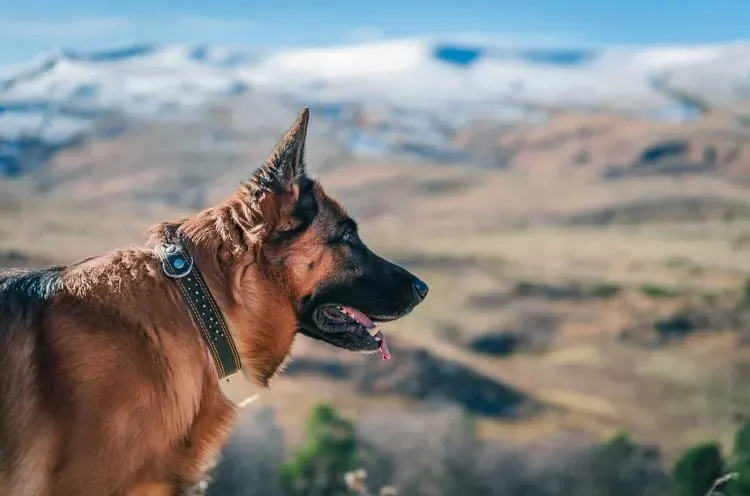
There are some styles of collars, that are commonly sold for large breed dogs, that should be avoided at almost all costs. Often, these are specialist training tools for highly problematic dogs.
They should never be pressed into service just to avoid basic training issues, and they should only be used under the supervision of a vet and a skilled trainer.
Choke Chains/Collars
This is a highly controversial style of collar that most owners should avoid. Designed as a metal chain that tightens when they pull, they are sold as a solution to tugging dogs.
While they can be used for this purpose under the eye of a highly skilled trainer, they need to be perfectly fitted and used correctly, and most owners don’t have the skills or knowledge for this.
These collars can be incredibly dangerous if they’re not used in the right way.
These are tools designed for specific, quick corrections, not daily wear or standard walking. Martingale dog collars and ‘no pull’ collars can both provide a gentler way to correct this issue at home.
Prong Collars and Shock Collars
These are both highly aggressive collar styles that all owners should avoid using.
They’re a negative training tool that hurts the dog to tame problematic behaviors — not a good way to teach your dog good manners!
Prong collars literally have ‘pinch’ arms that sit against the dog’s skin. They commonly cause injuries and even infections.
Shock collars and ‘e-collars’ have a unit that buzzes, vibrates, or outright shocks the dog when it pulls.
Because they create fear in the dog, they can amp up aggressive responses and therefore, are a really bad idea for a big breed.
While these collars may seem like a way to easily handle unruly dogs, it’s worth investing in positive training methods instead.
These are very serious, end-of-the-line training tools that should only ever be used under the supervision of highly trained specialists, and on true problem dogs that have resisted every other method of training.
And even then, they will need to be used for short periods and with quick corrections.
Conclusion
It’s well worth investing in your German Shepherd’s collar, as it will be a vital part of their life for many years.
With a quality collar, leash training becomes easier, and your dog can enjoy every activity you take them on without worry.
A high-quality flat collar is an excellent choice for daily wear and will be a robust, long-lasting addition to your dog’s kit. Plus, you can get them in various colors, patterns, and styles to suit any taste.
We hope our guide helped you pick a suitable collar for your German Shepherd.
German Shepherd Collar FAQ
Do you still have questions before buying your new German Shepherd collar? Let’s look at some common questions that owners like you have.
Which is better for a German Shepherd – a harness or a collar?
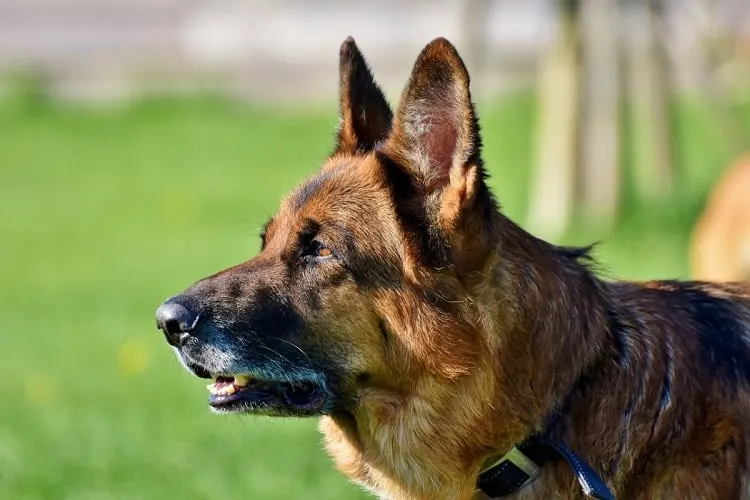
While harnesses may seem like they should be better for bigger dogs, that’s not always true.
Many large breeds learn to pull their owners around by the harness, and it can be very difficult to retain control solidly with a harness if your obedience training isn’t impeccable.
Teaching your dog to walk politely on a collar is a far better idea for most dogs.
We only recommend a harness if your dog has throat or breathing issues that make you want to avoid pressure there, or if they are very head-shy to handle.
A harness might be a good choice for older dogs that are getting uncomfortable with a standard collar.
What size collar should I get for my German Shepherd?
With most brands, a suitable collar size for a German Shepherd is L or XL. However, it’s always smart to physically measure the size of your dog’s neck and compare it to the brand’s sizing chart.
Remember that a good collar should fit with two fingers of space under the collar, ensuring a comfortable fit that isn’t too tight.
How tight should a dog collar be?
As mentioned above, you do not want your collar too tight. Always fit it so that you can easily place two fingers under the dog’s collar.
This means that the dog cannot slip out of the collar easily, but they will feel comfortable and can slip the collar if there’s an emergency, such as getting caught somewhere unsafe.
Never keep your dog’s collar tight, and if you have a young dog that’s regularly growing, check the fit regularly.
Can a dog collar be too heavy?
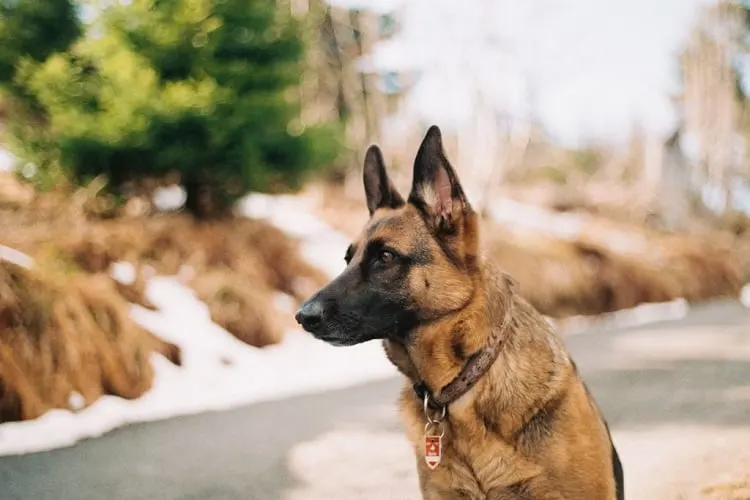
Yes, a collar can be too heavy for practical purposes. It’s less about the dog’s neck itself, and more about the collar sitting securely.
Quick-release buckles are a great safety feature in an emergency, but if you attach too many heavy tags and goodies, the quick-release might trigger when the dog jumps and the combined weight bounces.
Additionally, having too much weight around their neck can make the dog hyper-aware of the collar and thus, uncomfortable.
It may also ring off of drinking bowls, dip into food, and become an annoyance for the dog.
A collar that’s a little too heavy will also be more prone to wear down the coat over time.
While German Shepherds are a large breed, they don’t have the raw strength of power breeds like Pitbulls and don’t need a particularly thick collar to control them.
Can puppies wear collars?
Your dog’s first ‘big boy’ collar should only be worn after 6 months, but getting them used to a collar earlier is a good idea. You can start collar training from about 12 weeks.
You can use lighter or small breed collars, breakaway safety collars, or even something as simple as a ribbon (while supervised) to help acclimate your dog to having something around their neck earlier than this.
Remember to take it slowly and always make it a positive experience for your little pup.
Can German Shepherds be trusted off leash?
Absolutely, German Shepherds can be trusted off-leash but with some important considerations. Training is key. These intelligent dogs must learn recall commands before being given freedom.
Consistent training is crucial to ensure they will come back when called, regardless of distractions.
What color collar looks best on a German Shepherd?
When choosing a collar for a German Shepherd, several colors can look great. It often depends on the individual dog’s coat color and personal preference.
For German Shepherds with traditional black and tan coats, bright colors like royal blue or red can stand out nicely against their fur. These vivid colors create a striking contrast that draws attention to the dog’s appearance.
On the other hand, earth tones like forest green or brown blend well with the German Shepherd’s natural coloration. These shades complement the dog’s coat, giving a more subdued, elegant look.
Of course, black is a classic choice that matches well with virtually any German Shepherd coat color. Black collars provide a sleek and timeless appearance that is quite versatile.
























